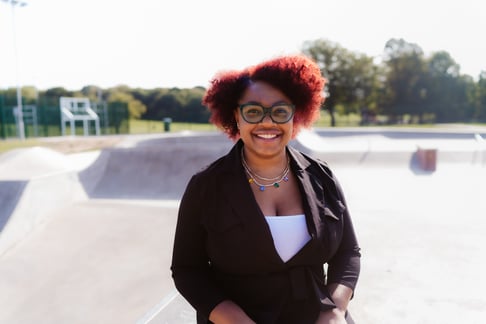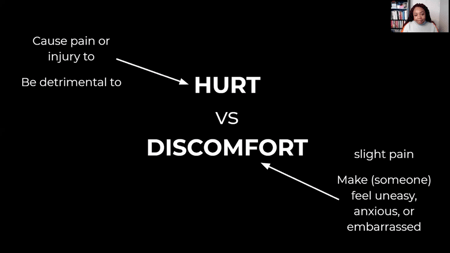Top tips on best practices for growing inclusion within the workplace
Jaz Broughton, certified life coach, diversity and inclusion (D&I) consultant, and speaker for Hustle Crew recently delivered a workshop for the Concirrus team on inclusion within the workplace and how it is created. Below Jaz shares some of her insights on how inclusion doesn’t appear overnight, it grows, often from a small seed that we plant collectively or individually.

What is inclusion?
Setting inclusion as a goal can feel like a bit like a moving target. The first step is to define what inclusion is and what it means to you and your company.
In its simplest form, it can be defined as the “action or state of including or of being included within a group or structure”. This, however, does not go far enough in explaining what we are talking about. I prefer the definition “Inclusion means all people regardless of their abilities, disabilities or health care needs or more have a right to be respected and appreciated as valuable members of communities”. This broadens the meaning behind inclusion and addresses two key factors: Respect and appreciation.
Respect and appreciation of our differences is key to building an inclusive workplace and can only happen as a result of equality and justice. They sit on top of a foundation of understanding, learning, and unlearning. If last year and the years proceeding has taught us anything it’s that equality by itself is not as powerful as it should be.
This is where equity comes into play. Equity is defined as “striving to identify and eliminate barriers that have prevented the full participation of certain groups and individuals.” Accounting for privilege and oppression by having open and safe conversations is vital in creating inclusion. Both these words “privilege and oppression” have been discussed heavily within the media recently and they can be sticky words as they are not as ‘fun’ as equality.
Unlearning and learning
Inclusion grows when we start to look at our individual collective mindsets that illustrates our beliefs. Doctor Carol Dweck speaks about this in her theory of fixed and growth mindsets. If you believe that your beliefs are unchangeable — the fixed mindset — you will want to prove yourself correct over and over rather than learning from your mistakes. While the growth mindset creates a powerful passion for learning. When we apply this theory to growing inclusion it’s the belief that attitudes, beliefs and behaviours can be developed through unlearning and learning that is key. If we all participate in this unlearning of our bias and learn about our own privilege, we can foster inclusion.
Being inclusive relies on our humanity – this means we are going to make mistakes and upset a few people. This shouldn’t stop us from pushing forward to write those wrongs and to most importantly extend empathy while committing to learning about different cultures.
Hurt and discomfort

Part of inclusion growing is addressing hurt and discomfort. We often hear the phrase growing pains and pain may be part of the journey to inclusivity. This hurt and discomfort invaded our timelines and screens on a global level in June 2020 in respect to the ‘Black Lives Matter’ movement. This was a response to the murder of George Floyd. This hurt is nothing new to those who experience it but it’s a learning point for those of us that don’t. To sit in your discomfort and privilege and apply the antidote of inclusion and anti-racism to that hurt.
The reality is that racism still exists. For example, the Sainsburys 2020 Christmas advert features a family that just so happens to be black. The advert was met with comments on Twitter e.g. “Where are the British people?” Seeing this type of racist dialogue on Twitter, blogs etc, highlights the ignorance that is so deep within our society.
One of the most powerful ways we can reach inclusion is through empathy. An understanding of hurt and discomfort lets us empathise with others and recognise the want to avoid further hurt. This can be achieved by creating systems and environments that include others. By having empathy, we can put ourselves in the shoes of those who don’t feel included.
So, what are the catalysts for inclusion?
1. Acknowledgement and appreciation of culture
The Sociological term ‘collective consciousness’ coined by Durkheim describes a set of shared beliefs, ideas, and attitudes that are common to a particular social group or society. Our place of work and our colleagues are a type of social group. So, in the same way, your kitchen won’t look exactly like mine, our beliefs and attitudes will be slightly different. We don’t all have the same ‘collective consciousness’ however, we can still appreciate each other’s differences.
Edward T. Hall describes how society is like an iceberg in his model of culture. He suggests we only see what is above water and what is beneath the surface is completely different. So just like there are visible aspects of ourselves that we present at work, there are hidden aspects of ourselves such as our beliefs that are not as obvious. You may see that I am black, but you cannot see my views are on raising children or gender roles.
The more we acknowledge what is hidden, rather than what is above the surface, the more inclusion can grow. Acknowledgment and appreciation lay the foundations for us to have these types of conversations, so we can become more aware of each other’s cultures and build empathy for other's experiences.
When someone’s beliefs or attitudes are different from your own you can openly discuss them in a safe space. We can then empower each other by making it less our mission to change other beliefs, and focus more on understanding each other instead. This is powerful as it relieves the expectation of the excluded individual to lead the charge in becoming more included.
2. Privilege to amplify
Privilege is a “special right, advantage, or immunity granted or available only to a particular person or group” This can include class, language, race, gender, and much more. This can be uncomfortable to discuss depending on whether you hold the privilege or not. Privilege is almost seen as a dirty secret that no one wants to discuss. White privilege can also be weaponised to make one group guilty or shamed however, this is unhelpful and can be a huge blocker to us. Instead, we need to use this privilege to amplify.
Nobody is included when we are held captive by our privilege, but everybody is helped when we engage with it. Use your voice! If you have the privilege and feel like you can’t relate to the excluded, then you might not feel you have a right to involve yourself in the conversation. Your voice, however, matters and it can enable change. Use your voice as an opportunity to foster change and encourage others to discuss these uncomfortable topics. We saw the impact of this on social media with initiatives like #ShareTheMicNow campaign, where white celebrities passed their voice to lesser heard voices.
This type of change can’t happen if we are bound by shame. By interacting and learning from those who are less privileged we can then gain the gift of understanding, which can lead to empathy. We can then carry these stories of hurt and discomfort which will then inform how we create space for people, which will ultimately foster inclusion. This is something we may forget when we feel challenged or critiqued.
3. Ask the humble questions
Ask questions with curiosity, free from judgment, no matter how difficult it may be in the moment. By asking questions not only to others but yourself e.g., “what are my biases?” This may feel uncomfortable but can go a long way in helping others feel more included. Next time you feel uncomfortable with a comment that has been made in a meeting and you want to challenge it, this is an opportunity for a humble question. e.g., “what did you mean by that?” When you want to be an ally but can’t think of the right words, this is an opportunity for a humble question. We often feel a sense of pressure to have a speech ready with quotes and reference points of what people should and shouldn’t do. We assume that allyship is instant performance and instant response however, this is a tough expectation on others. The first step is to continue asking the humble questions e.g. “I want to understand this more, please can you elaborate?”
With these three catalysts for inclusion, we can start to see change occur and inclusion can grow and prosper.
Learn more about Jaz and how she is helping companies grow here.
See how Concirrus has been championing a more inclusive workplace here.

Powering the future of insurance
If you want to book a 1-1 meeting with us then let us know by clicking the link below.
Book a meeting